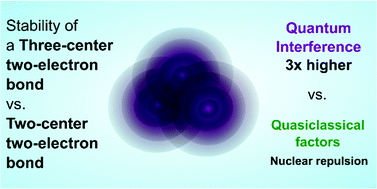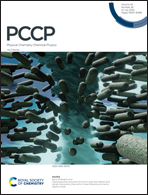Abstract
The nature of the three-center two-electron (3c2e) chemical bond is investigated by the Interference Energy Analysis (IEA) method and using a SC(2, 3) (spin coupled wave function with two electrons and three orbitals) approach for describing 3c2e bonds. In this approach, each center involved in the bonding contributes with a one-electron state for the interference process. The species H3+, Li3+, LiH2+, C3H5+, C3H3+, R2CBeCR2 (R = H, CH3), C7H11+ and CH5+ are considered in the study. The results show that 3c2e bonds have the same features of a 2c2e bond: the stability of the chemical systems exhibiting 3c2e bonds derives from quantum interference among electronic states. Other (quasi-classical) factors are always overall destabilizing, mostly because of the nuclear repulsion. The interference energy of a 3c2e bond is about three times higher than that of a 2c2e bond involving atoms of the same elements. In particular, concerning Li3+ and C3H3+ we found no evidence that the ‘aromatic’ character attributed to those species imparts any special features to their chemical structures, compared to other 3c2e bonds. Therefore, these species exhibit multicenter bonds, essentially equivalent to the other studied cases.



 Please wait while we load your content...
Please wait while we load your content...